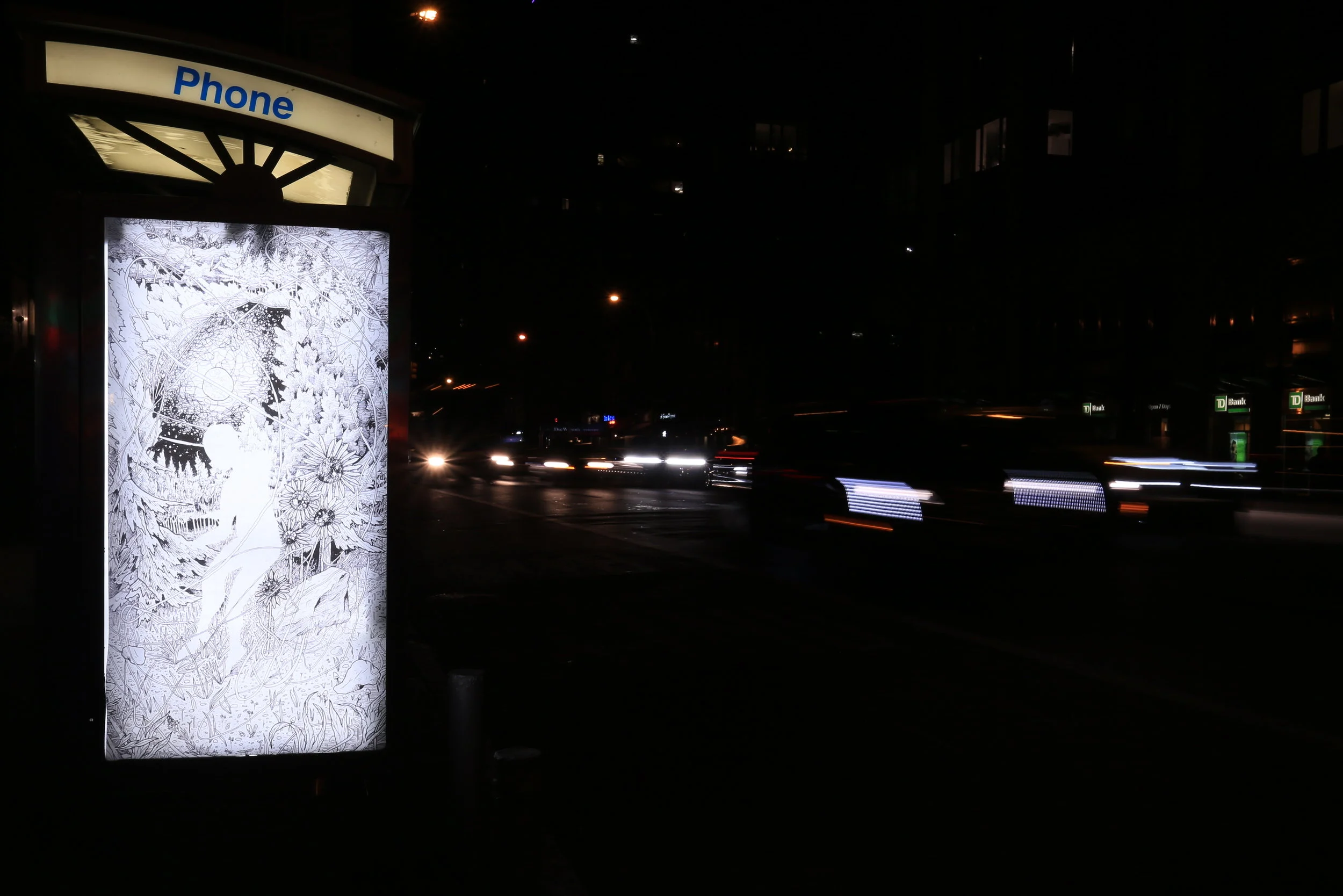Artwork by Jeff Soto. Photo by Luna Park.
Jeff Soto told us that his contribution to Art in Ad Places "would never be used to advertise anything." All the more reason it should be used to replace a mini-billboard. Generally speaking, the images and messages that most valuable in public spaces are also the images least likely to be used as advertising.
Jeff said, "I chose this image because it would never be used to advertise anything. It’s really hard to sell anything with images of death, and I made sure there was no wording or even my name on it. It is an anti ad. I’m hoping this image looks out of place enough that a few people will take a second look. People interpret my work differently, and I encourage that, but despite the sometimes creepy imagery, most of my art celebrates life and positivity. I would love this image to give viewers pause or to inspire a young artist. We’re subjected to unwanted advertising everywhere, all day and I LOVE the idea of reclaiming these advertising spaces as art spaces."
And actually, Jeff had already inspired the Art in Ad Places team, long before his poster went up. He was one of the first people to know about the plans for what would eventually become Art in Ad Places, before there was a website, a name, artists attached, even a fully-formed concept. His early encouragement, over late-night tacos, was invaluable. We wondered what artists would think of our marketing campaign against advertising, especially artists whose work isn't often explicitly political, or who do work with brands from time to time. Jeff embraced the idea, was excited by it. That inspired us, kept us brainstorming. So, this week we say thank you to Jeff Soto, for being an early champion of Art in Ad Places, and for contributing such an arresting piece.
Artwork by Jeff Soto. Photo by Luna Park.









